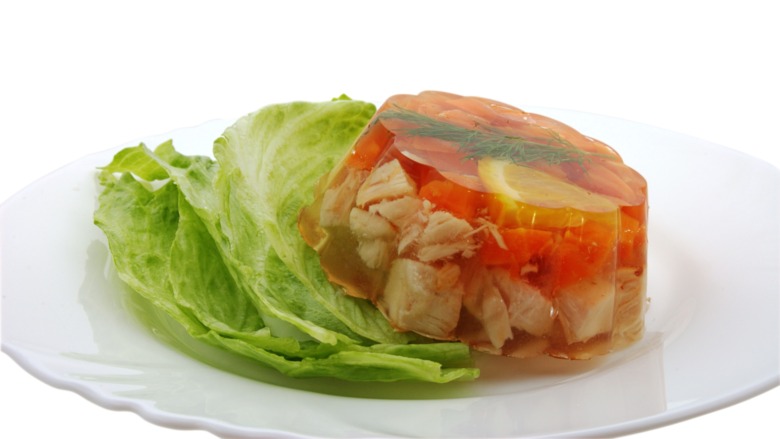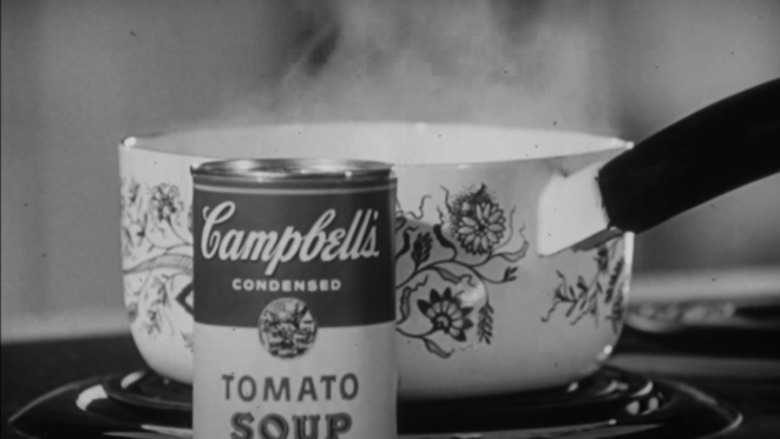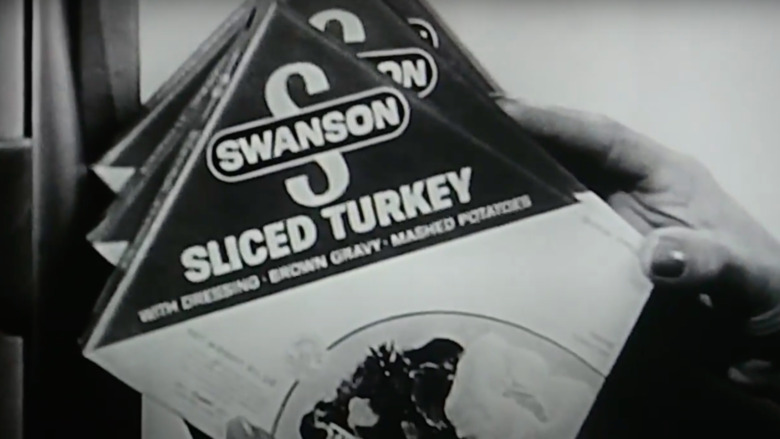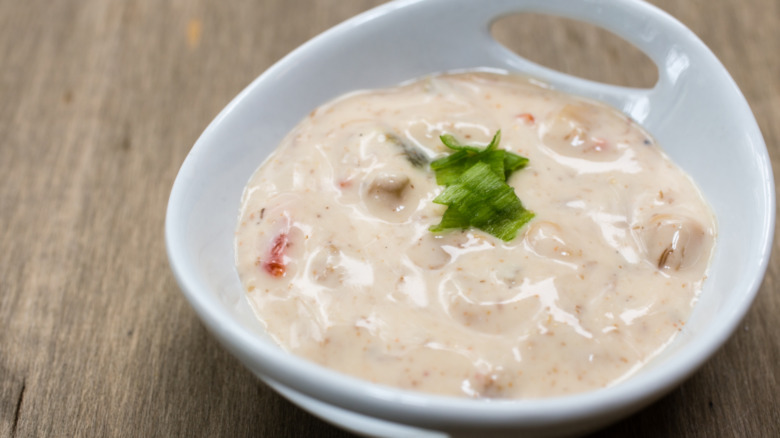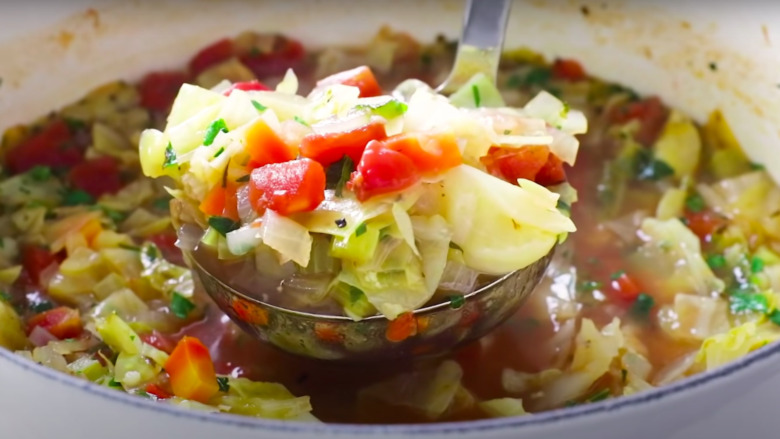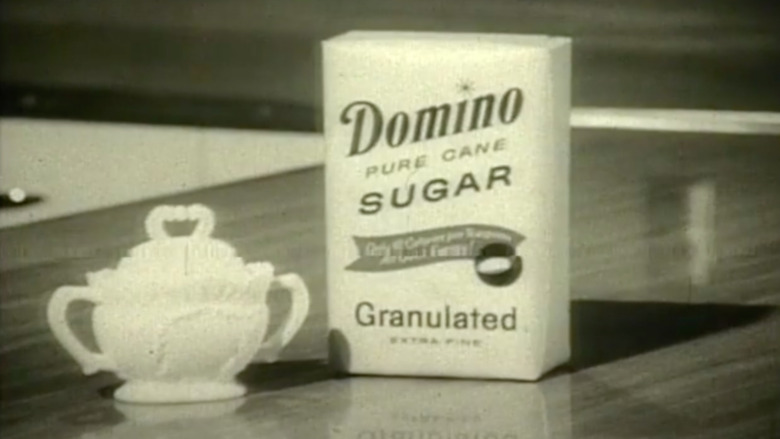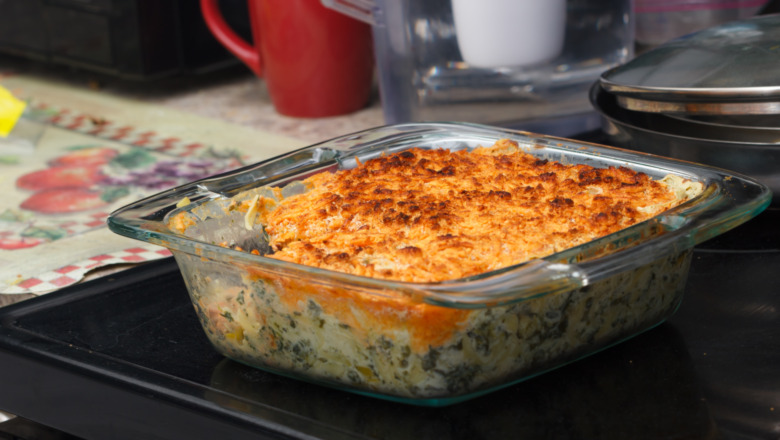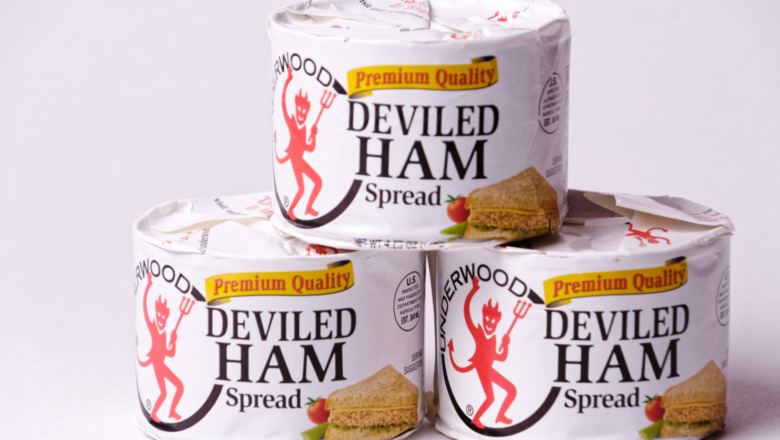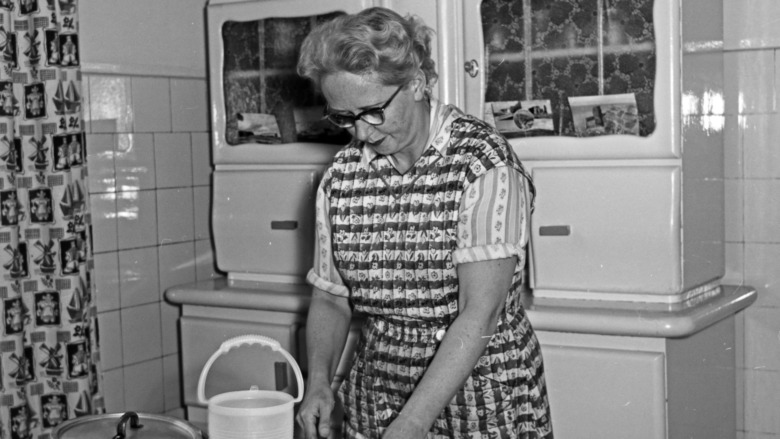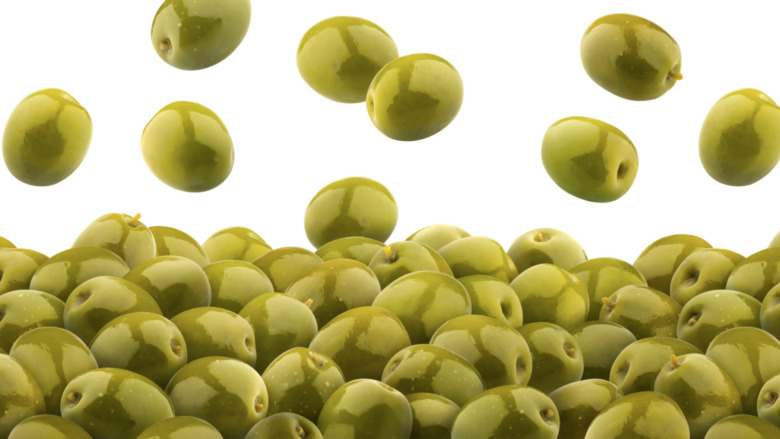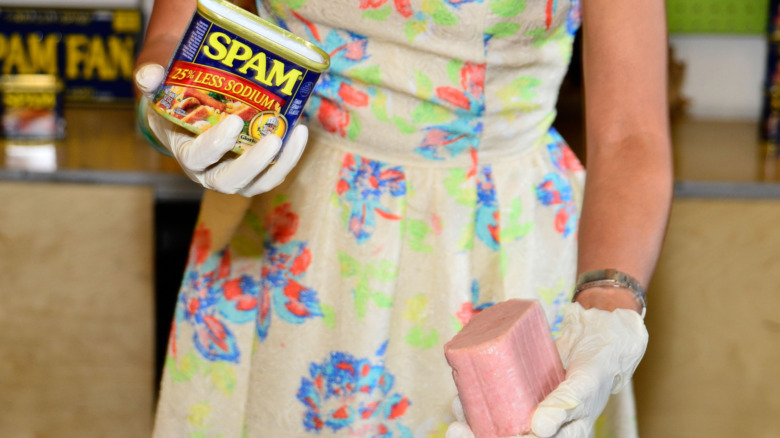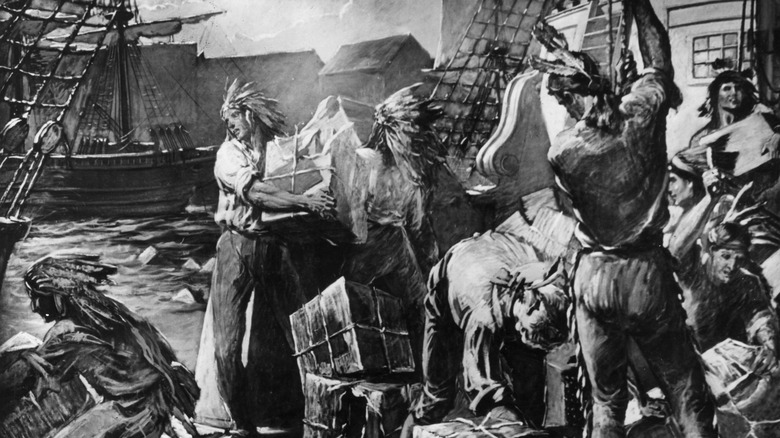
Strange Food Fads Of The 1950s
Humans have had a colorful history with food throughout the years. People seemingly latch onto trends as they come, only to cast them aside when something “better” and more exciting comes along. Remember cake pops? While the adorable desserts exploded in the 2010s, they’ve seemingly shrunken out of the spotlight, making way for the next viral food fad du jour — these days courtesy of the tastemaking TikTok.
But the 1950s, for example, are completely different compared to what we deem mouthwatering today. “What fascinated me most was the idea that jellied ham loaf, tomato aspic, and frozen peas cooked with cream cheese were all once a part of our culinary lexicon,” writes Christopher Muther of The Boston Globe. Remarkably enough, even without as healthy options for grub as what we have today, waistlines were still smaller in the ’50s. Per HuffPost, “The average adult is now 26 pounds heavier than 60 years ago.”
While folks of the ’50s definitely had smaller portion sizes to thank for their svelte physiques, it still doesn’t mean that some of the stuff they ate wasn’t, well, gross. So, ditch your nutritious avo toast goodbye and lean into the lifestyle of The King as you slap some peanut butter on that bacon. These are some of the strangest food fads of the 1950s.
Why not encase everything in gelatin?
Gelatin-encased meals are perhaps the most horrifying yet memorable food trends of the 1950s. For some reason unbeknownst to man, ’50s folk delighted at the sight of lamb or veal (amongst other proteins) encased in a bright Jell-O mold and wobbling towards the dinner table. While they were available in countless cookbooks of the time, how is it that these “Perfection Salads” came to be?
As revealed by The Daily Meal, “in the early 1950s refrigerators were still quite expensive, and Jell-O needs refrigeration in order to set.” Simply put: gelatin-encased dishes became a “status symbol.” To make matters worse, even if one decided that these dishes were truly disgusting, “[the] molds were so popular, and featured in so many cookbooks […] many home cooks simply accepted that they were a desirable thing to make.”
If that’s not all, another social trend was rearing its head in the 1950s. According to Serious Eats‘ summary of Perfection Salad, women who cooked with “instant products” were viewed as “lazy [and] disorganized.” The solution? “Instead of cooking from scratch, they used prepared foods, but ‘doctored them up’ with additional ingredients or dramatic presentations that made it clear they’d spent real time and effort on the meal.” So, when Jim comes home from work and sees a plate of shrimp set in a jiggly Jell-O mold in front of him — his wife certainly won’t have to fish for compliments.
Soup belonged in a sandwich
There’s no denying that soup and sandwiches go perfectly together as a tried-and-true comfort food fave. In fact, folks in the ’50s thought so, too, and the Campbell Soup Company reinforced this notion with countless catchy ads promoting this iconic pairing. According to Campbell’s website, their adored condensed soups first started gaining popularity in the early 20th century, with their “Cream of Mushroom and Chicken Noodle [hitting] the shelves” in 1934. By 1950, their first “television adverts air in the USA, and the company goes on to sponsor popular TV shows, Lassie and Peter Pan.”
And even after so many years of wartime rationing, Campbell’s knew its consumer was still looking for a deal. “Costs are lowered often and prices held down by packing only the concentrated goodness, the essence of the goodness,” one 1950s Campbell’s ad gushes. As such, kitchen shelves were stocked with the instantly recognizable red-and-white cans, so why not get creative with them?
Per LoveFood, one ambitious 1950s Campbell’s ad recommended using one of their cans to make a “Souper Sandwich,” which “convinced [the public] that sandwiches could be made hot and hearty by substituting the top slice of bread for sauce made from tinned soup.” As the outlet explains, “it suggests chicken soup for a chicken sandwich, tangy tomato soup for cheese, creamy celery on ham, and mushroom soup for beef.”
A 'miscalculation' led to the invention of TV dinners
Ah, the TV dinner. While these days, the term is synonymous with frozen meals in general, the name was actually coined by Swanson in the ’50s, and coincided with another suddenly booming fad of the decade: The Golden Age of Television.
While the idea of a TV dinner isn’t exactly strange, the way Swanson invented its product certainly is. According to Smithsonian Magazine, in 1953, a Swanson employee “colossally miscalculated the level of the American appetite for Thanksgiving turkey, leaving the company with some 260 tons of frozen birds.” Luckily, Swanson’s marketers realized the growing popularity of the television set. Per Britannica, “In 1950 only 9 percent of American households had televisions; by 1959 that figure had increased to 85.9 percent.” So, what better way to market their food than with the seemingly most influential home product of the ’50s?
Swanson salesman Gerry Thomas hopped to work, “Ordering 5,000 aluminum trays [and] concocting a straightforward meal of turkey with corn-bread dressing and gravy, peas and sweet potatoes.” Priced at 98 cents a pop, Swanson TV dinners were a massive success, promoting the idea that one can grab an already prepared meal and quickly heat it up, perfectly harmonizing “with the spontaneous excitement of gathering around the [ television] screen.” As Smithsonian Magazine notes, “in the first full year of production, 1954, 10 million turkey dinners were sold.
'50s folk were clamoring for clam dip
The 1950s were the birth of a dip-mania, as it was an easy appetizer that could be prepared in minutes (via The Daily Meal). As The Story Behind the Dish: Classic American Foods explains, “chips and dip became popular during the 1950s, when changes in American culture, particularly entertaining styles in the new suburbs, aligned with major advertising campaigns for a new product.” In 1954, the Lipton Company brought to the market its dehydrated onion soup mix, which “once combined with commercial sour cream,” suddenly turned into an immensely popular dip, and “became a favorite sauce for dunking potato chips” (via Entertaining from Ancient Rome to the Super Bowl).
And while the “California Dip” as it was dubbed doesn’t sound that strange, there were some other pretty wacky options to scoop up on your vessel of choice. As Fashionable Food reveals, dips of the ’50s “hadn’t yet taken on the colorful and polyingredient guise that they [did] in the Sixties.” This meant that ingredients usually consisted of “sour cream, thinned cream cheese, or mayonnaise mixed with a single flavoring ingredient.” One particularly questionable flavoring option? Clams.
Per Fashionable Food, “when the first recipe for clam dip appeared on the Kraft Music Hall television show in the early Fifties, New York City sold out of canned clams within 24 hours.” Naturally, this dip wasn’t that healthy, and one mere tablespoon of the stuff comes in at 71 calories — with 66 percent coming from fat.
People must have been bored on the Cabbage Soup Diet in the '50s
Remarkably, the Cabbage Soup Diet has stood the test of time, and you’ve likely heard of it before, but its origins come from the 1950s. Much like the 1930s had the “Hollywood Diet” (one which involved eating grapefruit during each meal), these very restrictive diets were aimed to “reduce caloric consumption” (via Filling Up: The Psychology of Eating).
So, what exactly was the premise? As Colorado State University explains, “this diet involved consuming nothing but soup for seven days” with “the original recipe [calling] for cabbage, vegetables, water and dry onion soup mix.” Popularized by celebrities of the time, folks suddenly found themselves taking part in this strange food fad, even though “flatulence is listed as a main side effect, along with boredom from eating unlimited amounts of the same food,” as revealed by The Academy of Nutrition and Dietetics (via Salon).
Although the Cabbage Soup Diet is still around today, it’s not exactly a great long-term weight-loss solution. “The cabbage soup diet was popular and effective over the short term for weight loss because it caused significant caloric-restriction,” notes Dr. Fatima Cody Stanford to The Scotsman, adding, “Most of the weight loss in the initial period is likely water weight, as opposed to fat stores.”
On the other hand, the '50s had the Sugar Diet, too
The end of World War I saw the rise of the suburbs in America. Per Academic Earth, “As men came home, ready to settle down and raise families, they hopped in their Chevrolets and left the overcrowded cities and isolated farming towns for comfortable living within a short commute to work.” Unfortunately for these families, “the suburbs were not designed for walking.”
Considering the 1950s diet basically consisted of high-fat meals with an “emphasis on meat [and] less on fruits and vegetables” (via the Journal of the History of Medicine and Allied Sciences), people in this era suddenly saw their waistlines expanding, which, in turn, led to some pretty bonkers dieting fads. One particularly absurd regimen was none other than the Sugar Diet, which was pushed by the brand Domino. The premise was simple: replace your produce with regular cane sugar and watch your energy soar and your waistline shrink. As one Domino ad in a 1955 issue of Life magazine boldly claimed, “three teaspoons of Domino sugar actually contain fewer calories than one medium apple.”
Disturbingly enough, this idea that sugar was actually good for you continued well into the following decade, and as The New York Times reveals, “The sugar industry paid scientists […] to play down the link between sugar and heart disease and promote saturated fat as the culprit instead.”
Canned soup casseroles were all the rage in the 1950s
Being a housewife in the 1950s was all about efficacy. Homemakers of this era had to ensure that their homes were constantly tidy, meals were always “attractive and exciting,” and children were looked after — all while looking flawless themselves (via CBC). The life of a housewife was exhausting, so whenever a new cooking trend cropped up that didn’t require too much effort, women pounced at the opportunity.
The Campbell Soup Company, in particular, spoke to the ’50s housewife by marketing the idea of canned soup casseroles. Campbell’s knew that families were stocked up on canned goods, and “Americans always had on-hand […] Campbell’s Cream of Mushroom Soup” (via Campbell’s). Per Taste, using these soups made time in the kitchen a breeze — seriously, what could be easier than “a dish composed of tuna fish, canned mushroom soup, and corn flakes”? Along with tuna casseroles, green bean casseroles were also the rage, and these dishes were dirt cheap, requiring minimal skill to make. As Taste puts it, this “might be why [they were] so maligned,” too.
Deviled ham made for the perfect sandwich spread
To this day, deviled eggs are one of the most popular bite-sized snacks often served at picnics and brunches. According to The Straight Dope, “the origin of ‘deviling’ in food preparation” began in 1800 and refers to adding hot seasonings in food such as cayenne pepper or mustard. And while deviled eggs are in no way considered strange, the 1950s saw an explosion of another type of deviled snack: ham.
Per The Daily Meal, Underwood’s canned deviled ham was especially popular, a spread made simply “of ground ham with seasoning.” While putting deviled ham in sandwiches is normal enough, ’50s folk would smear the stuff on salads (ham salad, anyone?) and use it to create appetizers, such as “ham balls” — which are essentially balls of deviled ham that are pan-fried (via Genealogy Bank). Weirdly enough, people in the ’50s saw this food fad as a “teammate” for a variety of different dishes, and one 1950 ad suggests adding deviled ham to “egg salad, peanut butter, tuna fish and all kinds of cheeses” (via Genealogy Bank). A spicy peanut butter and ham sandwich? Thanks, but no thanks.
The 'Grandma's Pantry' initiative
At the end of World War II, the Soviet Union and America (who were up until that point allies against the Axis) suddenly turned against one another, with tensions only rising at the height of the Cold War. With the paranoia surrounding a Soviet nuclear attack, folks in the ’50s were living in fear, making sure they were stocked up on rations if anything was to happen.
According to History, in 1955 under the President Eisenhower administration, “the Federal Civil Defense Administration (FCDA) urged every family to keep a seven-day supply of food and water on hand in case of an atomic emergency.” Dubbing the initiative “Grandma’s Pantry,” the FCDA caught the eye of the public by using quirky slogans such as, “Grandma was always ready for an emergency.” Another radio ad proudly announced (via Eater), “Grandma’s Pantry, the symbol of preparedness. Unexpected company? Grandma always had plenty for everyone.”
The “shelter-friendly” foods and drinks that the FCDA marketed included “Hawaiian Punch, Campbell’s Soup, Tang drink mix, candy bars and Kellogg’s Corn Flakes.” As the decade went on, the Eisenhower administration realized “a few extra cans of food” wouldn’t quite cut it, and they “embarked on the quest to develop the perfect ‘Doomsday food.'” Per History, “by the early 60s, the U.S. Department of Agriculture” finally announced their perfect “Doomsday food.” It wasn’t exactly exciting, but it was “a bulgur wheat biscuit dubbed the ‘All-Purpose Survival Cracker.'”
Spanish olives on everything!
In the 1800s, olives were seen as “a celebration type food” instead of an “everyday” snack, according to Lucy Long, director of the Center for Food and Culture in Bowling Green, Ohio (via B). In a sense, this is somewhat true to this day, with the stone fruit cropping up in your martini, as an add-on to a charcuterie platter, or pulverized into a tapenade. Although they were only available in Europe initially, by “the late 1880s and 1890s […] production [of black canned olives] began in California.”
For decades, olives “dominated” Thanksgiving alongside celery (they were viewed as palate cleansers in between “richer courses”), but by the time the ’50s rolled around, folks suddenly felt like experimenting with these bite-sized salty snacks in their daily lives.
As it turned out, in 1950, the olive oil tariff was lowered in the U.S., with imports of green olives steadily rising and becoming used more in daily American cooking. As written in the U.S. Congress House Committee on Education and Labor’s Hearings, in 1949, 6,363 gallons of imported green olives in brine made their way into America, and by 1950, that number jumped to 12,482. Per LoveFood, it was imported Spanish green olives, in particular, which “had some serious marketing acumen back in the day and managed to persuade us the salty nibble was a great accompaniment to any dish.” With people “sticking them on cheese logs, frankfurters and even burgers,” that’s certainly a lot of olives.
The volume of canned meats consumed was undoubtedly strange
While canned meats aren’t exactly strange (and are still around today), the sheer volume of canned meat consumed in the 1950s is odd — along with all the different varieties and brands, too. In 1926, Hormel Foods produced “the world’s first canned ham” (via Hormel Foods), and by 1937, the company introduced Spam, which, according to the brand’s website, went on to “become synonymous” with soldiers during World War II.
After the war, soldiers returned home with a sudden penchant for the salty luncheon meat, and as ’50s food author Laura Shapiro told the NPR, “some foods developed for soldiers […] successfully transplanted into the home.” As The Saturday Evening Post notes, while most people today know of Spam, this period saw countless alternatives such as Treet, Prem, and Mor — all with their own colorful adverts showcasing different dishes one could conjure up. “the ’50s food industry tried to convince American women that they didn’t enjoy cooking or have time to do it — and that they’d be better off turning to a box or can,” explained Shapiro to the NPR.
Sure enough, housewives definitely got crafty with their Spam concoctions. One recipe in Better Homes & Gardens, for example, advertised a “Twenty Minute Roast,” which consisted of “wedges of Spam glazed with orange marmalade” (via NPR). By 1959, Spam produced its one-billionth can.

This Theory Suggests The Egyptian Pyramids Are Actual Power Sources

When You Eat Poison Blowfish, This Is What Happens To Your Body

Alien Abduction Stories So Convincing You May Believe They're Real
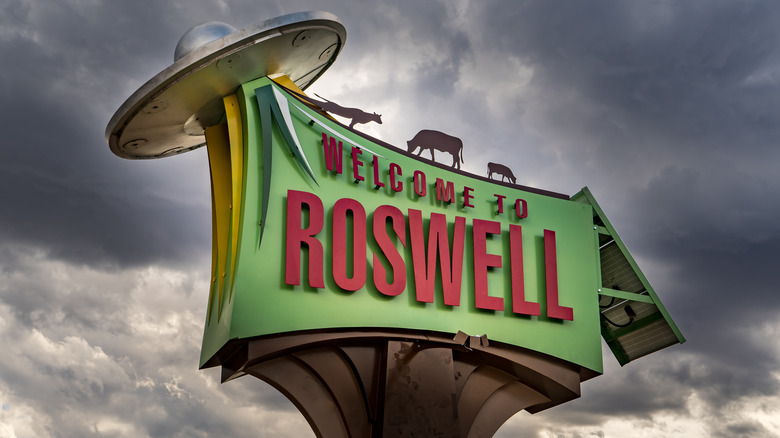
Bizarre Details About Roswell That Still Don't Make Sense

The Many Homes Of Santa Claus Around The World

The Real-Life Event That Inspired Poltergeist

The Real Reason Metallica Just Canceled Two Festival Shows

Are Dogs' Mouths Really Cleaner Than Humans'?

The Most Bizarre Things Caught On Nanny Cams

Most Bizarre Tales Of Haunted Objects
